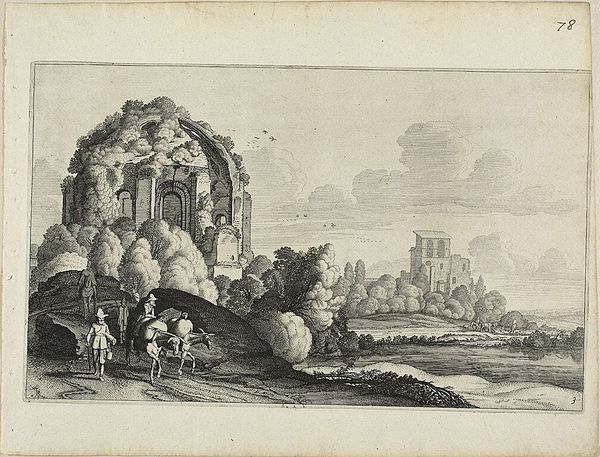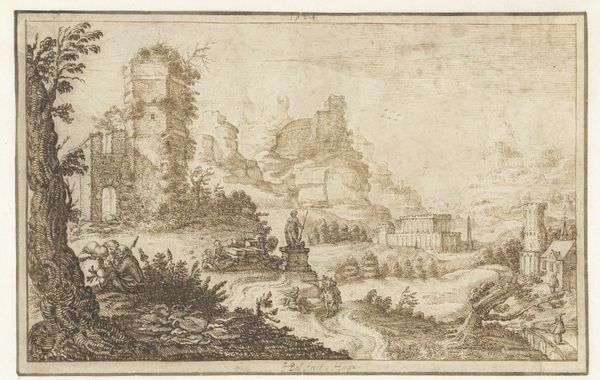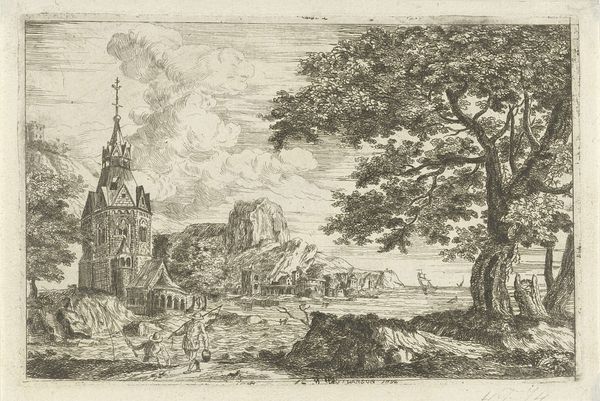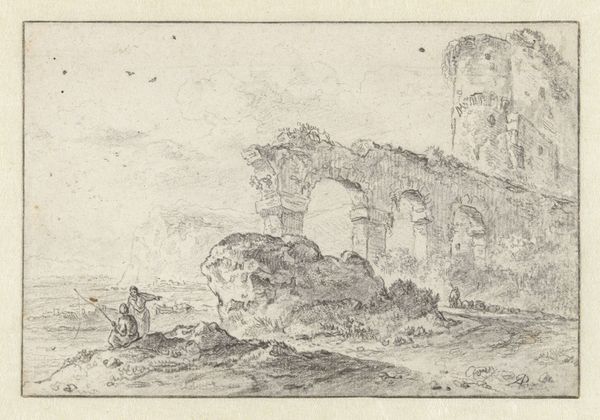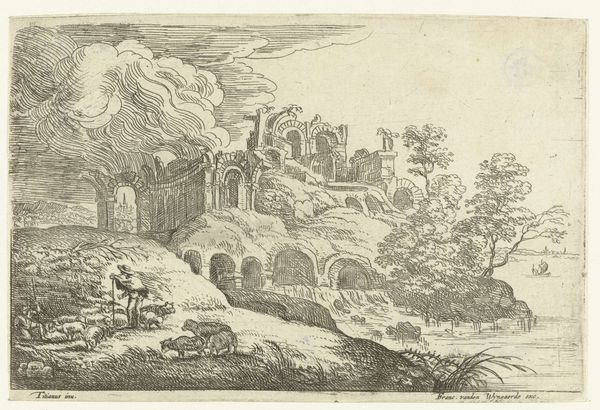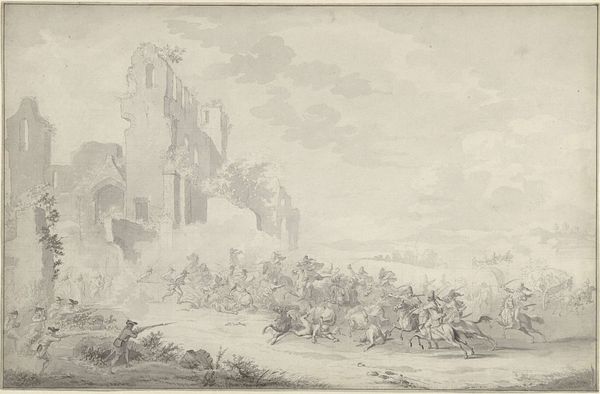
etching
#
narrative-art
#
dutch-golden-age
#
etching
#
landscape
#
etching
#
cityscape
Dimensions: height 189 mm, width 285 mm
Copyright: Rijks Museum: Open Domain
Curator: We’re now looking at “The Inn in a Ruin,” an etching made by Simon de Vlieger sometime between 1610 and 1653. Editor: My initial impression is one of wistful decay. The tonality emphasizes a contrast between light and shadow, highlighting both the dilapidated structure and a sense of bygone serenity. Curator: Precisely. De Vlieger’s expert use of the etching technique creates subtle tonal variations and fine detail, notice the lines evoking texture, particularly within the architecture and cloud formations. The composition itself relies on a juxtaposition of horizontal and vertical elements, lending a structural balance despite the ruined state. Editor: The inn ruin certainly takes center stage. I see an array of figures going about their business - an image of everyday life contrasts strongly with the romantic notion of ancient ruins and decay. It prompts reflections on the nature of time. Curator: Note also how the architecture incorporates foliage – trees grow amongst the stonework, adding dynamism. The integration of the human, the built, and the natural further serves as a critical component within de Vlieger’s broader aesthetic project. Editor: And on the distant shore across the river I spy a miniature rendering of the city's form! What might be interpreted here? Do the merchants crossing the channel perhaps desire a sense of commerce or a far-flung voyage to their urban counterparts? I imagine they might aspire to it, laden down by pack animals as they appear to be. Curator: Perhaps de Vlieger is considering ideas around transience itself; he could be suggesting how the structures that once defined a civilization are impermanent; that nature inevitably reclaims everything in the end. The cloud cover is a marvel, and the eye, as a result of his art, wonders what lies beyond the frame itself. Editor: Yes, these images evoke thoughts on how fleeting our existence is - how these cultural symbols shape and mold memories, providing collective ways to come together as humans do now. Curator: Ultimately, Vlieger compels a contemplation on time, decay, and how the past continually interfaces with the present moment. Editor: Absolutely. A profound exploration woven into a seemingly simple scene of rural life, mediated via de Vlieger’s wonderful sense for symbolism!
Comments
No comments
Be the first to comment and join the conversation on the ultimate creative platform.





